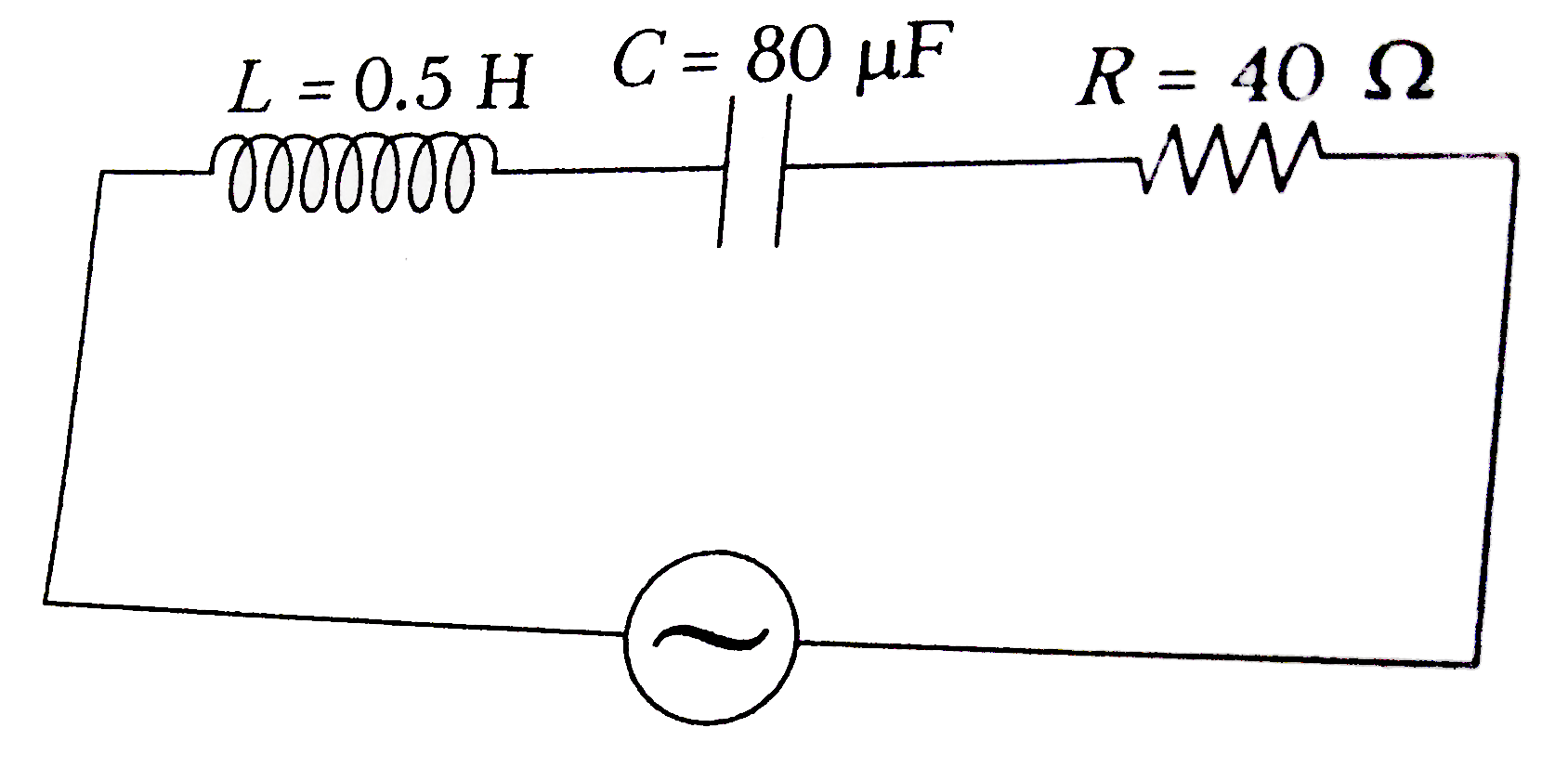A series L-C-R circuit is operated at resonance . Then
voltage across R is minimum
impedance is minimum
impedance is maximum
current amplitude is minimum
The correct Answer is:B
To solve the question regarding the behavior of a series L-C-R circuit at resonance, we will analyze the properties of the circuit step by step.
1. Understanding Resonance in L-C-R Circuit:
At resonance, the inductive reactance (X_L) equals the capacitive reactance (X_C). This condition can be expressed as:
XL=XC
2. Impedance Calculation:
The impedance (Z) of a series L-C-R circuit is given by the formula:
Z=√R2+(XL−XC)2
Since at resonance XL=XC, the equation simplifies to:
Z=√R2+02=R
This indicates that the impedance is at its minimum value, which is equal to the resistance (R).
3. Current Calculation:
The root mean square (RMS) current (I_rms) in the circuit can be calculated using Ohm's law for AC circuits:
Irms=VrmsZ
Since we found that Z=R, we can rewrite the equation as:
Irms=VrmsR
Given that Z is at its minimum (equal to R), the current I_rms is at its maximum.
4. Voltage Across Resistor:
The voltage across the resistor (V_R) in the circuit can be calculated using Ohm's law:
VR=Irms⋅R
Since the current is at its maximum when the impedance is minimum, the voltage across the resistor will also be significant but not minimum.
5. Conclusion:
From the analysis above, we find that:
- The impedance (Z) is minimum at resonance.
- The current (I_rms) is maximum at resonance.
- The voltage across the resistor is not minimum but remains significant.
- Therefore, the correct statement is that the impedance is minimum.
Final Answer:
The correct answer is: Impedance is minimum.
At resonance, the inductive reactance (X_L) equals the capacitive reactance (X_C). This condition can be expressed as:
XL=XC
The impedance (Z) of a series L-C-R circuit is given by the formula:
Z=√R2+(XL−XC)2
Since at resonance XL=XC, the equation simplifies to:
Z=√R2+02=R
This indicates that the impedance is at its minimum value, which is equal to the resistance (R).
The root mean square (RMS) current (I_rms) in the circuit can be calculated using Ohm's law for AC circuits:
Irms=VrmsZ
Since we found that Z=R, we can rewrite the equation as:
Irms=VrmsR
Given that Z is at its minimum (equal to R), the current I_rms is at its maximum.
The voltage across the resistor (V_R) in the circuit can be calculated using Ohm's law:
VR=Irms⋅R
Since the current is at its maximum when the impedance is minimum, the voltage across the resistor will also be significant but not minimum.
From the analysis above, we find that:
- The impedance (Z) is minimum at resonance.
- The current (I_rms) is maximum at resonance.
- The voltage across the resistor is not minimum but remains significant.
- Therefore, the correct statement is that the impedance is minimum.
The correct answer is: Impedance is minimum.
Similar Questions
Current through an AC series L-C-R circuit is 2 A if operated at resonance frequency , and 1 A if operated at 50% less than resonant frequency . The current (in A) if the frequency is 100% more than the resonant frequency , is
A.√2 B.1 C.√3 D.Data insufficient
View SolutionAssertion: At resonance, power factor of series L-C-R circuit is zero.
Reason: At resonance, current function and voltage functions are in same phase.
View SolutionFor a series L - C - R circuit at resonance, the statement which is not true is
View SolutionFor which set of values of XL,XCandR, a series LCR circuit will be in resonance ?
View SolutionIn series LCR circuit at resonance
View SolutionFor a series L C R circuit, the power loss at resonance is
View SolutionFor a series L C R circuit, the power loss at resonance is
View SolutionIn the given figure , a series L-C-R circuit is connected to a variable frequency source of 230 V . The impedance and amplitude of the current at the resonating frequency will be

View SolutionIn a series L-C-R circuit the voltage across resistance , capacitance and inductance is 10 V each. If the capacitance is short circuited, the voltage across the inductance will be
View Solutionin series R-L-C circuit at resonance, which of the following is correct?
View Solution
